Paris: Must See Places
Options abound and the amazing places to see in Paris are endless. However, if it’s your first trip to Paris, there are some places you must not miss! From the Louvre to Place des Vosges and beyond, check out our top 6 places, each with a twist.
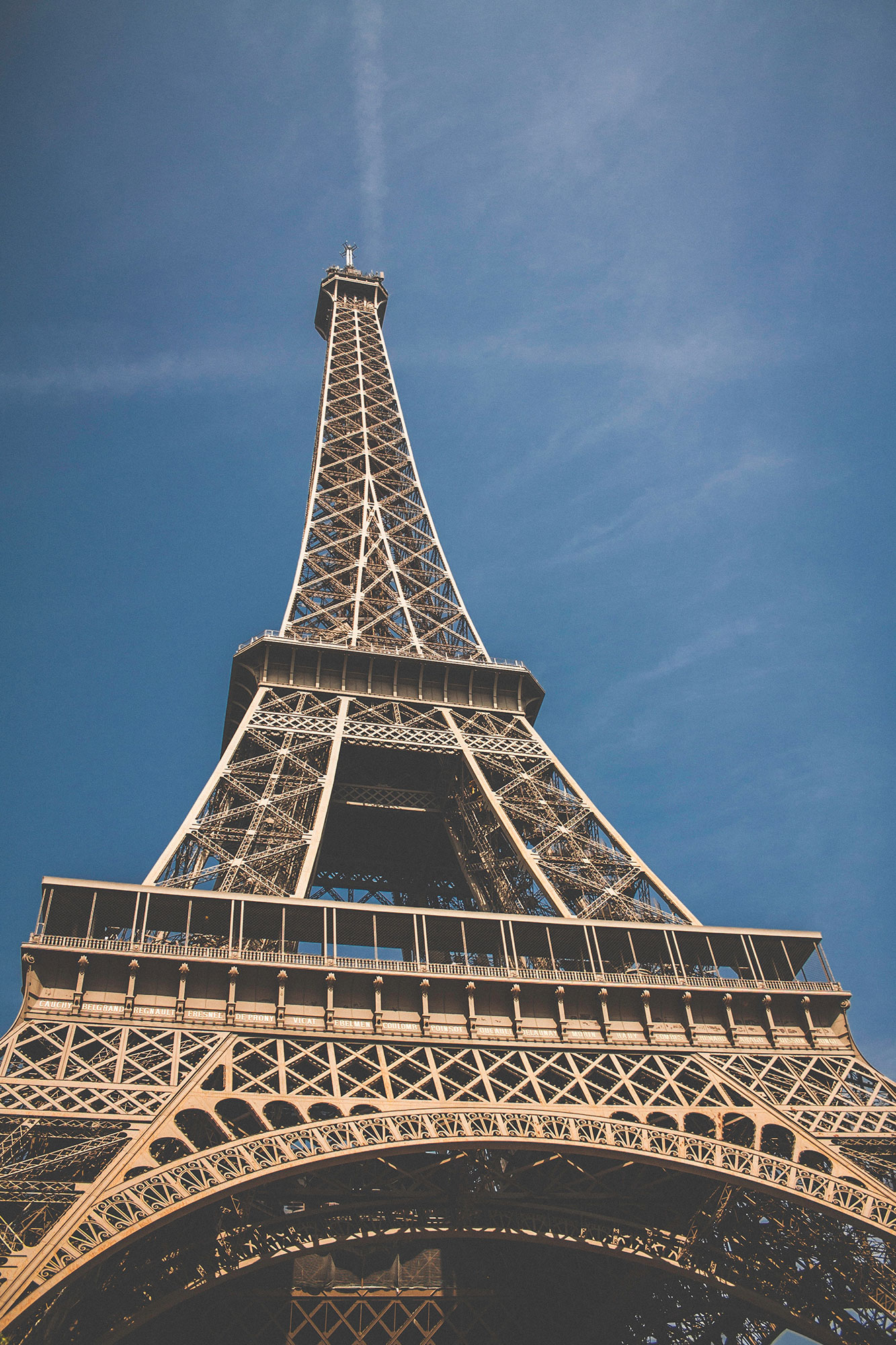
1. Eiffel Tower
Av. Gustave Eiffel, 75007 Paris, France
Seeing the Eiffel Tower is a must for your first visit. The question is, how close do you want to be? To add local flavor and start by admiring it from a distance, venture to Carette , a tea house by Trocadéro frequented by locals. Grab a table for two out front and feast on sandwiches and pastries, while people watching. After lunch, venture to the other side of the Trocadéro for your photo op with the Eiffel Tower in the background. Then stroll through the Trocadéro Gardens and across the Pont d’léna bridge to get as close to the Eiffel Tower as you wish. If you plan to go to the top, we strongly recommend getting tickets in advance. Tickets with pre-booked times are available 60 days ahead from the Eiffel Tower’s online ticket office.
In the evenings, don’t forgot to look up. The Eiffel Tower has a history with lights. For its inauguration in 1889, there were 10,000 lit gas street lamps. Today, the Eiffel Tower sparkles on the hour at night. Created for New Year’s 2000, 25 mountain climbers installed 20,000 lights over five months, plus a beacon with two light beams that reach 80 kilometers. The display lasts ~5 minutes each time.
Tour Eiffel:
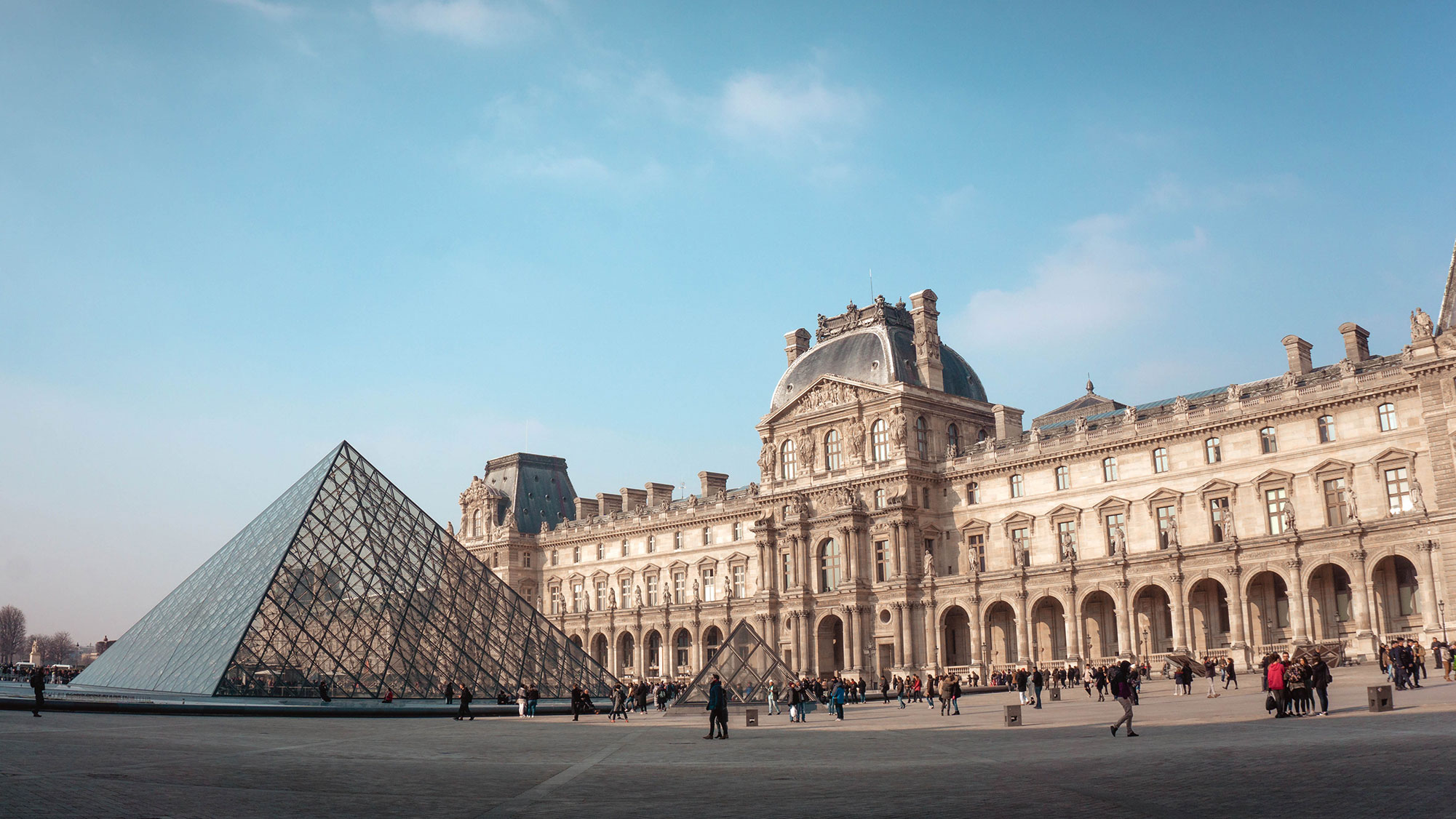
2. Louvre Museum
75001 Paris, France
The world’s largest art museum, you could spend weeks here and still be surprised by what’s around the corner. The Louvre blends old world sophistication (it was the royal palace of King Louis XIV) and modernism in the glass pyramid out front, with a collection covering medieval times through the 1850s. Perhaps you love antiquities such as the sculpture of Aphrodite (Venus of Milo), the Frieze of Archers, or the Seated Scribe? Or might you prefer Italian Renaissance such as Leonardo’s Mona Lisa, Michaelangelo’s sculpture The Rebellious Slave, or Titian’s Woman with a Mirror? Or the remains of the palace inaugurated by King Sargon II in Khorsabad? Regardless of your fancy, there is always something amazing to discover.
This 800-year-old building on the Ile de City began as a medieval fortress to protect the city, evolved into a royal palace, then became the museum it is today after the French Revolution. It’s impossible to see it all (seriously), so we recommend choosing a small piece to explore. Small group tours with our friends at Paris Muse help make your time manageable and enjoyable – with an expert tour guide to boot! They’ve been curating art tours since 2002, and all their guides have advanced knowledge in the relevant subject matter. So whether it’s an existing tour or one you create yourself, you will get a rewarding experience. If you do venture on your own, make sure to buy tickets online in advance – 8 million people visit the Louvre each year.
Stop for a hot tea and petit déjeuner (breakfast) or a pause salée (a savory break) near by at the legendary 1903 teahouse Angelina . Beware though: if you don’t reserve in advance, be prepared for a long line. Another option is to continue past Angelina and sample the decadent chocolates at Edwart Chocolatier (Concorde) , where they incorporate creative spices, herbs and other ingredients from different cultures to create unique sensory experiences.
Helpful Links:
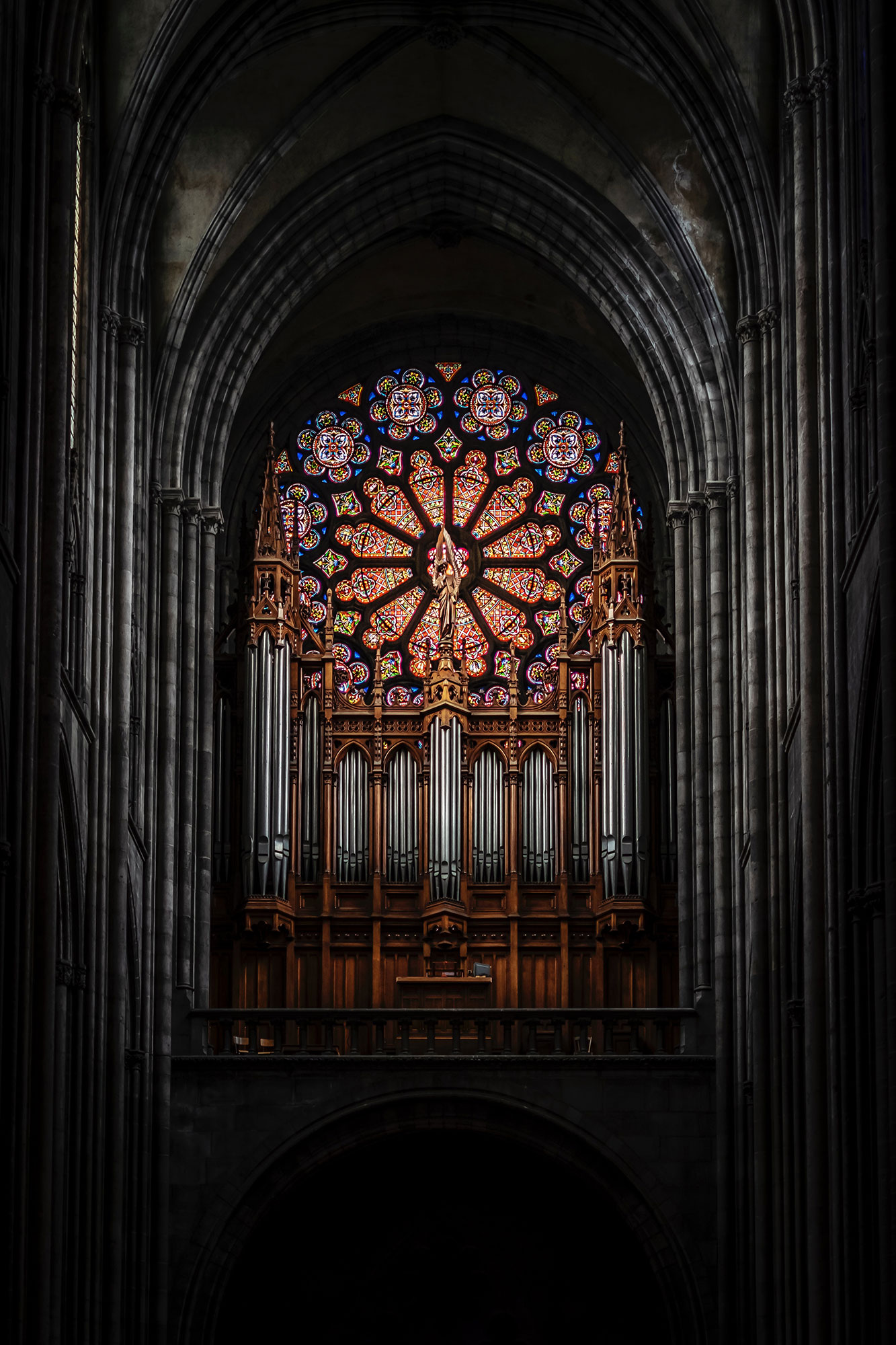
3. Cathédrale Notre-Dame de Paris
6 Parvis Notre-Dame - Pl. Jean-Paul II, 75004 Paris, France
On the Ile de cite (4th arrondissement) lies Notre Dame, perhaps one of the most infamous cathedrals in Paris. Built in the Gothic style, the first stone was laid in 1163 and it took almost 100 years to build. Given the tragic fire this year, Notre Dame is currently closed. The west facade with the dual bell towers remains intact and a reminder of the soaring beauty of the cathedral.
Not far from Notre Dame is Sainte-Chapelle , another cozy gem of the Gothic style. It was commissioned by Louis IX in the 1240s to house holy relics, and built in just 7 years. Sainte-Chapelle contains stunning stained glass, ranging across 15 windows and 15 meters high. A unique way for you to experience it is to attend a sunset concert. As you sit listening to glorious music, the setting sun casts its glow through the stained glass, creating a magnificent effect.
Tickets:
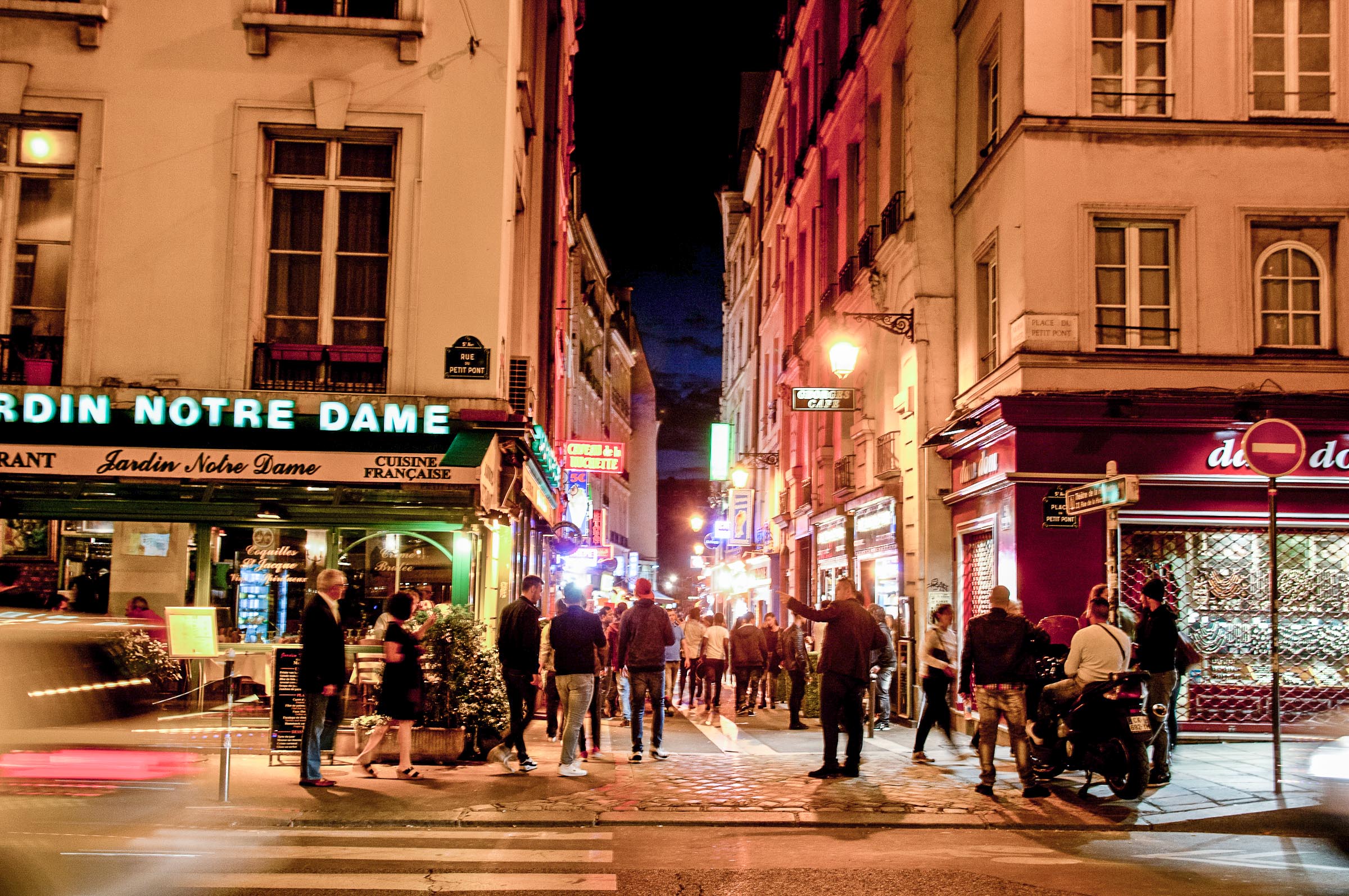
4. Latin Quarter
Latin Quarter, Paris, France
Explore the Latin Quarter on the left bank for a different aspect of Paris. A casual, younger feel, the Latin Quarter is home to the Sorbonne University and famous for its bookstores, like Shakespeare & Company , which was established in 1919. While the main boulevards are stately, dip down a random street to get a real feel of the area. Wander down the narrow, winding cobblestone streets--don’t worry if you get lost...that’s part of the fun. These streets provide a glimpse into how Paris used to be, before the wars and sweeping renovations. Other key spots to see include the Pantheon, Jardin des Plantes (wonderful for a morning stroll) and the two cathedrals Saint Germain des Pres and Saint Michel.
Our friends at F.E.D. Guides pointed us to Boulangerie Poilâne on Rue du Cherche Midi to taste handmade, natural sourdough bread. A family-owned bakery since 1932, their bread is used at many Parisian cafes for their tartine sandwiches. The story of Apollonia Poilane, the current owner, and how she persevered after the tragic early death of her parents only makes the story more impressive. Next door to the bakery is Comptoir Poilâne, where you can feast on delicious breakfast and lunch items inspired by the grains they use. Once you’re back home and missing Paris, you can even have them overnight you a loaf of sourdough bread!
Just a few doors down from Poilâne is Aventurine , a jewelry store with fun, colorful pieces. Their designs are unique and good quality, without being too expensive--a perfect souvenir for that friend back home.
Many of the stores in the Latin Quarter are closed on Sundays, so plan ahead.
Helpful Links:
Apollonia Poilâne https://thegentlewoman.co.uk
On the Rise: Taking on a Baking Dynasty https://www.ft.com
A Baker's Guide to Paris http://www.fedguides.com
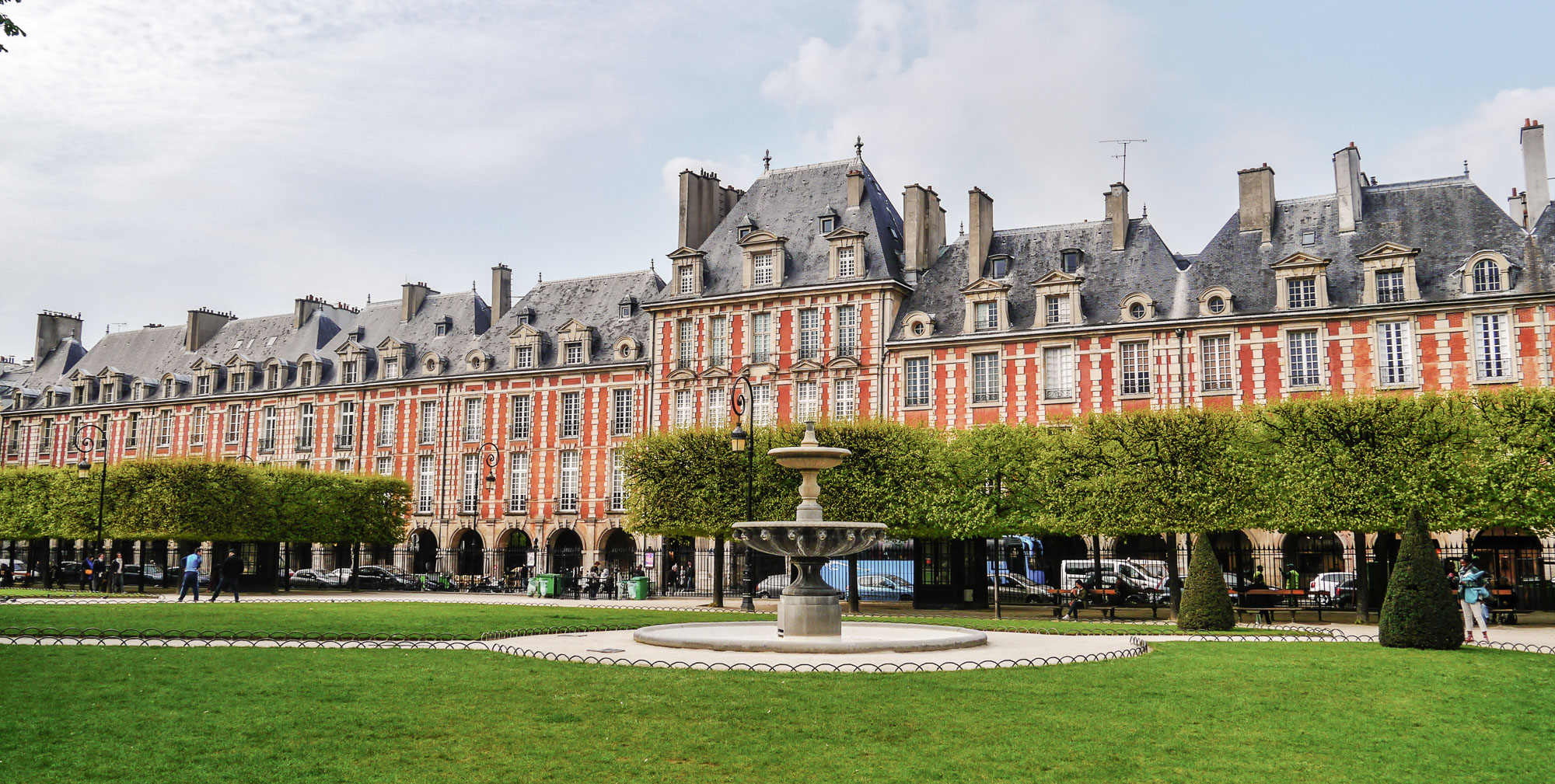
5. Place des Vosges
Pl. des Vosges, 75004 Paris, France
Le Marais is a trendy shopping district that blends storied architecture with its wealth of hotel particuliers (historical French townhouses), charming streets, and small shops. Its neighborhood origins date back to the Order of the Temple which built its church in the Marais in 1240, which at the time was outside the Paris city walls. It evolved to a distinguished residential neighborhood full of palatial homes and ultimately, King Henri IV had a royal square designed in 1605…now called Place des Vosges. Like many neighborhoods in Paris, Le Marais changed significantly with the French revolution. Ultimately, the Jewish community revived it as a commercial area with a focus on clothing, planting seeds for what it is today. With influences from its Jewish, Chinese, and LGBT communities, the Marais is an eclectic neighborhood with hip galleries, fashion houses, and restaurants.
The best way to experience Le Marais is to walk. During the week you can stroll and take time to admire the hotel particuliers and Hausmann architecture, whereas on Sundays the streets are closed to traffic and you can meander with the local crowds. Keep your eyes peeled for street art. Although still illegal, it’s become part of the urban culture, especially in the Marais.
The concept store Merci is renowned for its eclectic mix of the latest fashions, from clothes to furniture to jewels and books. For something a little different, visit the Museum of Hunting and Nature (closed for renovations until fall 2019). It provides a chance to see the inside of two majestic hotel particuliers with art and artifacts ranging from stuffed polar bears and panthers to gorgeous tapestries to exquisite horse paintings. But as you peruse all that, also look at the walls and chandeliers and imagine what it might have been like to live there hundreds of years ago.
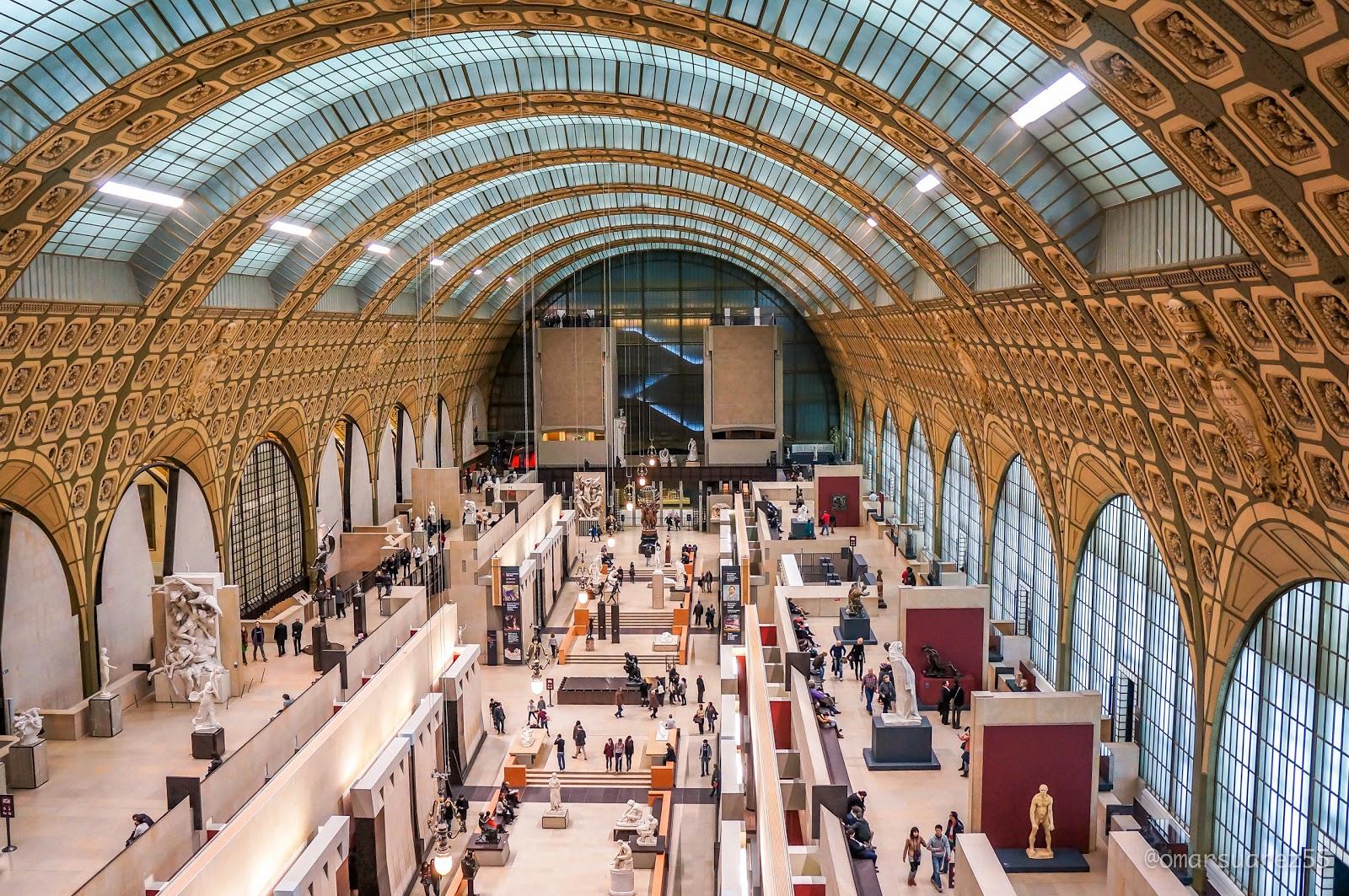
6. Musée d'Orsay
Esplanade Valéry Giscard d'Estaing, 75007 Paris, France
Out of destruction can come beauty. The site of the Musee D’Orsay contains a complex story, evolving from a garden in the early 1600s to a thriving aristocratic neighborhood in the 18th/19th century. But the entire neighborhood burned down in 1871 during the Paris Commune. It lay in ruins for 30 years until the city rebuilt the site as a railway station, in time for the Universal Exposition in 1900. In a sense, the building was the first piece of art for the museum. It now houses a key aspect of French history, with works covering 1848--1914 and including well-known impressionist and post-impressionist masters such as Cézanne, Renoir, Seurat, Gauguin, Monet, and van Gogh. The museum contains a mixture of paintings, sculpture, photography and even furniture, not to mention the architecture of the old station.
If you're in an adventuresome mood, explore the upper balconies, where through the massive transparent clock you can get a glimpse of the Sacré-Cœur Basilica , located at the highest point of the city in Montmartre.
The museum is open late on Thursdays, so it's a fun time to explore and then walk along the Seine towards Ile de la Cite to experience the nighttime ambiance of Paris.
To shorten the line, buy your tickets in advance and you can enter through the reserved entrance. Tickets are good for three months, but you must print them before arriving. For the mob scene, go on the first Sunday of the month when entrance to the museum is free (or avoid it).
Tickets:
Paris Muse tours:
{$section.placeName}
{$section.address}
{$section.addressNotes}
{$section.description}